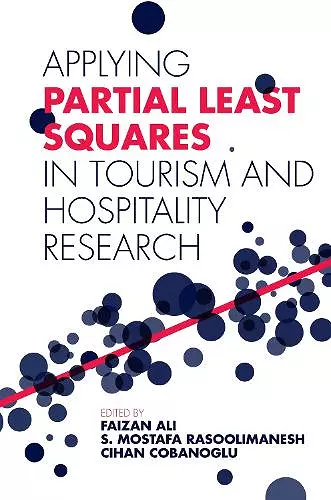Applying Partial Least Squares in Tourism and Hospitality Research
Faizan Ali editor Cihan Cobanoglu editor Dr S Mostafa Rasoolimanesh editor
Format:Hardback
Publisher:Emerald Publishing Limited
Published:14th Dec '18
Should be back in stock very soon

Partial-least-squares path modeling (PLS-PM), a composite-based form of structural equation modeling (SEM), offers great practical advantages to researchers and practitioners. It has been gaining increasing attention in various disciplines, including management information systems, marketing, strategic management, accounting, family business research, operations management, and organizational research. Yet advanced PLS-SEM techniques are not broadly used in hospitality and tourism research, which spells missed opportunities in terms of detailed analyses and actionable findings.
Applying Partial Least Squares in Tourism and Hospitality Research provides a forum for leading names in the field to discuss the major topical issues and to demonstrate the usefulness of PLS path modeling for academics and practitioners in hospitality and tourism. Its ten chapters discuss key aspects of advanced PLS analysis and its practical applications, covering new guidelines and improvements in the use of PLS-PM as well as individual topics such as multi-group analysis (PLS-MGA), the predictive qualities of PLS models, minimum sample size estimation methods, the reporting of mediation and moderation analysis, the assessment of the reliability of reflectively measured constructs, and the assessment of overall model fit through consistent PLS and the bootstrap-based test. This comprehensive coverage serves both as an introduction to PLS for the uninitiated and as a go-to reference work for researchers and practitioners interested in the most recent advances in PLS methodology.
Applying Partial Least Squares in Tourism and Hospitality Research is a must-read for academics in hospitality and tourism research and for hospitality and tourism practitioners such as industry consultants. Insofar as it can serve as a guidebook to recent advances within PLS-SEM, it is also of interest to researchers from other disciplines including management, business, and marketing.
Economists and business scholars show how to apply partial least squares-structural equation modeling to research in the tourism and hospitality industries. Among their topics are minimum sample size estimation in partial least squares-structural equation modeling: an application in tourism and hospitality research, predictions from partial least squares models, loyalty to rural tourism in Brazil: the moderating effect of the purchase frequency, human resource management practices and employee retention: the moderating effect of work environment, and analyzing the effects of online and offline communication in the hotel and restaurant industry: the partial least squares approach. -- Annotation ©2019 * (protoview.com) *
ISBN: 9781787567009
Dimensions: unknown
Weight: 499g
264 pages